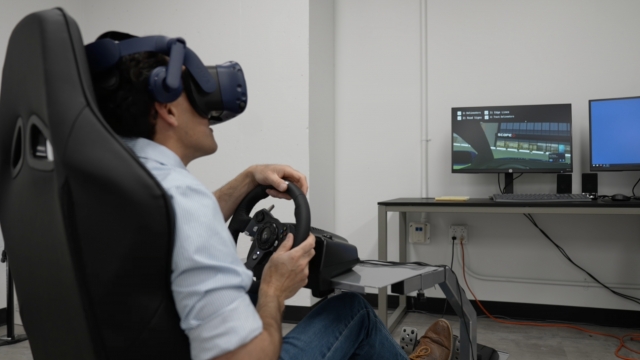With its flock of cranes in the sky and fleet of vehicles on its streets, the signs are clear: Charlotte, North Carolina, is one of the fastest-growing metro areas in the country, according to the U.S. Census.
"Our streets are our largest shared public space in Charlotte. We have more area on our streets than we do in our parks and other public spaces," said Meg Fencil, director of engagement and impact at Sustain Charlotte, a nonprofit pushing to make the city safer for pedestrians and bicyclists. "People who are walking and riding bikes in Charlotte account for less than 3% of all crashes, yet they account for over a third of all traffic deaths."
It's not just an issue in Charlotte, but all over the country.
According to the latest analysis from the Governors Highway Safety Association, more than 3,400 pedestrians died in the first half of 2022, which is up 5% from the year before.
SEE MORE: Report: Pedestrian deaths on the rise across the US
That comes after 2021 already marked a 40-year high in pedestrian fatalities in the U.S. Between 2019 and 2022, pedestrian deaths surged 18% across America and now average about 20 a day.
"There really is a pedestrian-bicycle safety crisis unfolding across the U.S.," said Nick Ferenchak, director of the new Center for Pedestrian and Bicyclist Safety.
The center is a new research facility located at the University of New Mexico funded by the U.S. Department of Transportation. Through the recent infrastructure bill, the federal government committed $5 billion to improving roadway safety and reducing deaths.
"It's a team of folks from across the country — so, West Coast, East Coast, Midwest — and we're here in the Southwest leading it," Ferenchak said.
Inside a simulation lab there, virtual reality creates real-life driving experiences in an urban environment, where streets, sidewalks, railroad tracks and people all intersect. How drivers interact with it all is a key component of the research there.
"Virtual reality is a really neat tool that we have nowadays, because if you're going to be testing some kind of solution out in the real world, it's going to be very expensive and it could be unsafe," Ferenchak said. "Something that you try might not work and then somebody could be killed if you test it in the real world. So, virtual reality allows us to test things at a very basic level to see: 'Is this going to work?'"
Getting behind the virtual wheel feels completely immersive, like you really are driving on a road.
"Our roads, especially in our urban areas, really prioritize moving vehicles quickly," Ferenchak said, "and that comes at the detriment of pedestrians and bicyclists who are also trying to use that road space."
How to improve sharing that space is a major focus at the center, including specifically looking at bike lanes.
SEE MORE: 'I could have been dead': Conor McGregor hit by car while riding bike
"It actually makes the entire roadway safer for all road users because it slows vehicles down," Ferenchak said. "Then, the next step up is actually protecting that space, and there's a debate going on: 'What is protection?'"
Then, there is the future — one that is expected to be filled with far more self-driving cars.
Simulations at the center are looking into how people interact with them and how streets can be safely built to better accommodate them.
"I'm kind of an old-school civil engineer," Ferenchak said. "I think the real permanent solution is the infrastructure of our streets — putting down concrete in the right way, so the streets are safe."
Back in Charlotte, that may be easier said than done.
"We have a huge backlog of sidewalks that need to be built, bike lanes that need to be built, safer access to bus stops," Fencil said. "Often, the price tag is startlingly high because it's not just the cost of building the sidewalk, it's also acquiring the property, going through engineering and permitting process, relocating the utility and the sewer."
Those are challenges that researchers at the center acknowledge can be tough to face.
"It is possible," Ferenchak said, "but not easy."
Trending stories at Scrippsnews.com




